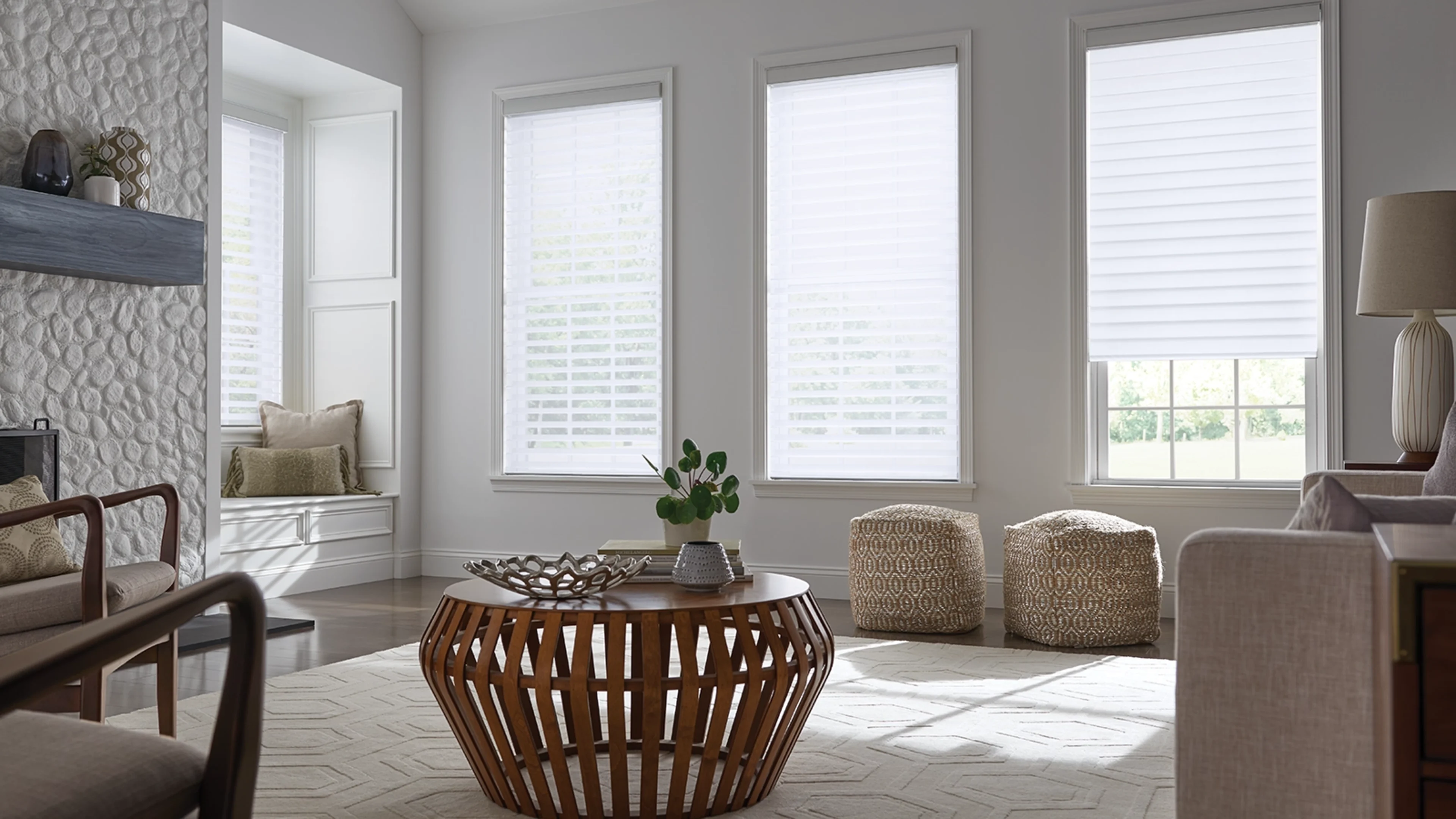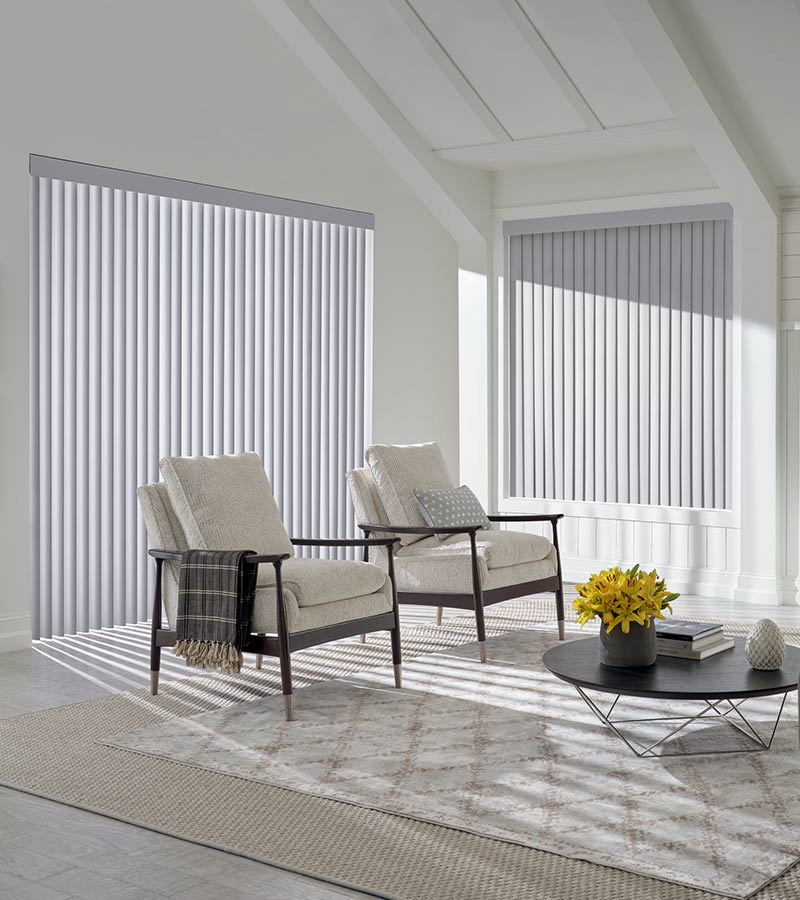The Ultimate Overview to Blinds: Kinds, Advantages, and Picking the Right Suitable For You
The world of home window treatments is huge and varied. Blinds come in numerous styles, each offering distinctive advantages for various setups. Comprehending these choices is essential for making notified decisions. Furthermore, variables like product choice and space functionality play a significant duty. As one thinks about the perfect equilibrium in between aesthetic appeals and usefulness, the nuances of determining and keeping blinds also emerge as crucial elements. What should one prioritize when choosing the suitable home window remedy?
Types of Blinds: A Detailed Overview
Blinds act as both functional and visual components in interior decoration, using numerous alternatives to suit varied choices and needs. Amongst one of the most prominent types are Venetian blinds, defined by horizontal slats that can be changed for light control and privacy. Roller blinds, known for their simpleness and versatility, come in a variety of materials and patterns, making them suitable for conventional and modern setups. Vertical blinds, commonly utilized for larger windows or moving doors, enable for easy change and are frequently made from material or plastic.
Roman blinds, with their classy folds up, include a touch of refinement to any kind of space, while mobile tones offer insulation and power effectiveness. In addition, bamboo blinds supply an all-natural, eco-friendly alternative, instilling areas with heat. Each type has one-of-a-kind attributes and designs, ensuring home owners can discover the excellent fit for their certain style and useful demands.
Advantages of Putting Up Blinds in Your Home
The installment of blinds in a home provides a number of significant advantages. They provide boosted personal privacy control, permitting house owners to manage exposure from the exterior. In addition, blinds contribute to power performance by assisting to manage indoor temperatures, lowering the reliance on home heating and cooling systems.
Enhanced Personal Privacy Control
When homeowners seek to enhance their home, installing blinds uses a considerable advantage secretive control. Blinds supply a versatile option for regulating presence from both the exterior and interior of the home. By readjusting the slats or elevating the blinds, individuals can quickly handle the amount of light going into while simultaneously obstructing the view from outside. This flexibility permits homeowners to produce a comfortable environment without giving up natural light. In addition, numerous designs and products are readily available, guaranteeing that homeowners can pick options that flawlessly mix with their design while improving privacy. Ultimately, the setup of blinds offers as an efficient methods to secure personal room, urging leisure and comfort within the home environment.
Power Effectiveness Improvement
Setting up blinds not only boosts personal privacy yet additionally substantially contributes to power efficiency in the home. By regulating all-natural light and decreasing warm transfer, blinds can aid maintain a regular indoor temperature level. Throughout warmer months, closing blinds can shut out excessive sunshine, therefore reducing the reliance on a/c. Conversely, in cooler months, they can supply insulation by capturing heat, decreasing heating expenses. Furthermore, energy-efficient blinds, such as cellular shades, are developed especially to minimize power loss. By buying top quality blinds, property owners can develop an extra comfy living environment while likewise decreasing power costs. Ultimately, the installment of blinds works as a functional remedy for those seeking to enhance both comfort and energy effectiveness in their homes.
Exactly how to Select the Right Blinds for every Area
Just how can one figure out the most ideal blinds for each and every room in a home? The choice process starts with reviewing the room's objective and setting. For example, in living areas, functional blinds that permit light control while making certain personal privacy are excellent. In rooms, blackout blinds can enhance sleep quality by shutting out exterior light.
Washrooms and kitchen areas require moisture-resistant alternatives to stand up to moisture, making plastic or synthetic timber blinds suitable choices. In addition, the wanted visual plays a vital function; working with blinds with the area's design improves the general ambiance.
Consider the amount of all-natural light each room gets; lighter blinds may be more effective for dark areas, while darker alternatives can add heat to sunlit spaces. Ultimately, comprehending certain requirements and preferences for performance and style will lead homeowners in making notified decisions customized to each space's special requirements.
Material Options: Timber, Plastic, Textile, and A lot more

Wood Blinds Advantages
Timber blinds are a preferred option amongst home owners seeking a mix of looks and capability. One substantial advantage of wood blinds is their all-natural charm, providing a cozy and welcoming appearance that enhances any type of indoor style. They are readily available in different surfaces and shades, permitting personalization to match personal design. In addition, wood blinds offer excellent light control and personal privacy, as their slats can be quickly gotten used to filter sunlight while preserving privacy. Their toughness is one more benefit; with correct treatment, wood blinds can last for many years without losing their charm (Phoenix drapes). They have insulating residential properties, helping to regulate indoor temperature levels and possibly reducing energy prices. On the whole, wood blinds merge sophistication and functionality, making them a suitable selection for numerous houses
Vinyl Sturdiness Features
Plastic blinds stick out for their remarkable resilience, making them a useful selection for numerous settings. These blinds are resistant to wetness, making them perfect for locations such as restrooms and kitchens where humidity can be a concern. Unlike timber, plastic does not warp, split, or fade under sunshine, making certain long-lasting performance and marginal upkeep. Furthermore, they are available in a variety of designs and shades, permitting home owners to customize their look without giving up sturdiness. Plastic blinds are likewise simple to tidy; a simple clean with a moist towel is frequently sufficient to maintain them looking fresh. Overall, their strength and low maintenance make vinyl a favored option among property owners seeking both capability and visual appeal.

Textile Choices Review
Blinds are available in a selection of fabric options that cater to various visual and useful needs. Typical materials include plastic, material, and wood, each offering one-of-a-kind advantages. Timber blinds provide a traditional, warm aesthetic and excellent insulation yet need maintenance to avoid warping. Plastic blinds are resilient and moisture-resistant, making them ideal for high-humidity areas like bathrooms and cooking areas. Fabric blinds, readily available in countless shades and patterns, offer flexibility and gentleness, boosting home decor while giving varying degrees of light filtering. Furthermore, choices like fake timber provide the look of natural timber with added durability. When selecting blinds, it is critical to examine the specific requirements of each room to assure peak performance and design.
Measuring and Mounting Blinds: Tips for Success
Measuring and mounting blinds may appear uncomplicated, careful attention to information is crucial for attaining a perfect fit. Initially, it is necessary to measure the home window frame accurately, keeping in mind both the size and height. For within mounts, deduct a tiny quantity from the width to assure a clean fit, while outdoors places need to prolong past the frame for better light control and aesthetic appeals. Using a steel measuring tape is recommended for accuracy.
When setting up, gather all needed tools, such as a level, drill, and screws. Following the producer's guidelines is important to assure correct setup. It is a good idea to pre-drill openings to stop damaging the brackets. In addition, having a second person can make the process smoother, specifically when raising much heavier blinds. After installment, test the blinds to verify they run efficiently and change as essential for maximum capability.
Maintenance and Care for Lasting Blinds
Correct upkeep and care can greatly extend the lifespan of window treatments. Routine dusting is essential; using a soft towel or a microfiber duster can properly eliminate dust without scratching surfaces. For much deeper cleansing, a gentle option of soap and water is advised, applied with a soft sponge, assuring that no moisture leaks right into the mechanisms.
For textile blinds, spot cleansing is a good idea, while wooden blinds must be treated with a wood-safe cleaner to keep their finish. Avoid revealing blinds to extreme dampness, heat, or direct sunlight, which can result in warping or fading.
In addition, routine assessment of cables and mechanisms can avoid wear and tear. It's smart to follow maker standards for certain materials, as different blinds might have one-of-a-kind treatment requirements. By embracing these straightforward upkeep methods, property owners can guarantee their blinds remain functional and visually pleasing for many years to come.
Often Asked Concerns
Can Blinds Assist Reduce Power Expenses in My Home?
Blinds can effectively minimize energy expenses in a home by offering insulation, obstructing warm during summer, and retaining warmth in winter months. Their ability to manage light and air flow enhances energy performance throughout the year.
Exist Child-Safe Options for Blinds?
Yes, there are child-safe alternatives for blinds. These consist of cordless layouts, retractable cables, and safety devices that eliminate dangling cables, ensuring a safe and secure environment for kids while preserving functionality and visual appeal in homes.

Exactly How Do Blinds Contrast to Tones or curtains?
Blinds commonly use much more specific light control and area performance than drapes or tones. Phoenix shades installation. They are commonly less complicated to keep and clean, while drapes give a softer aesthetic, and shades can provide varying insulation advantages
Can I Tailor the Design And Color of My Blinds?
Yes, blinds can be tailored in both design and color. Numerous suppliers use a variety of alternatives, enabling consumers to select materials, patterns, and tones that fit their individual aesthetic and home decoration.
What Is the Average Life Expectancy of Various Sorts Of Blinds?
The average life expectancy of blinds differs: wood blinds last 5-10 years, artificial wood 7-10 years, aluminum 5-10 read more years, and textile shades around 5 years, relying on exposure, maintenance, and usage to sunlight.
Bathrooms and kitchens need moisture-resistant options to hold up against moisture, making plastic or fake wood blinds ideal choices. Timber blinds use all-natural appeal and warmth, while vinyl gives toughness and ease of maintenance. One substantial advantage of timber blinds is their natural appeal, offering a cozy and welcoming look that enhances any type of indoor style. Furthermore, timber blinds supply outstanding light control and personal privacy, as their slats can be conveniently adjusted to filter sunlight while preserving privacy. For textile blinds, spot cleaning is advisable, while wood blinds need to be treated with a wood-safe cleaner to preserve their coating.